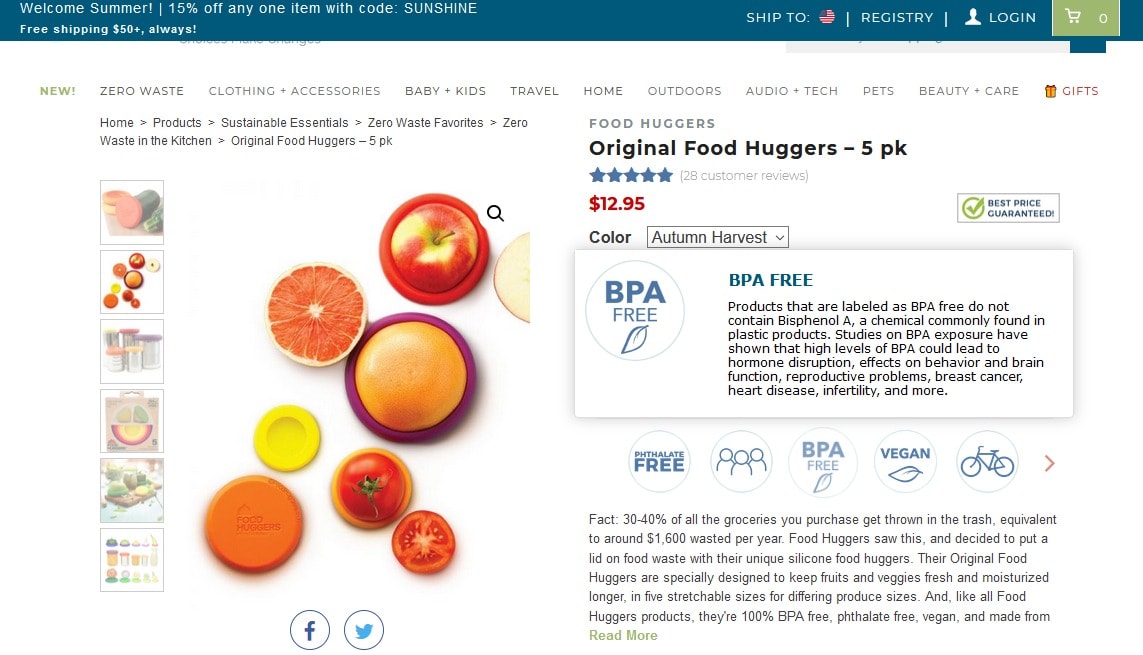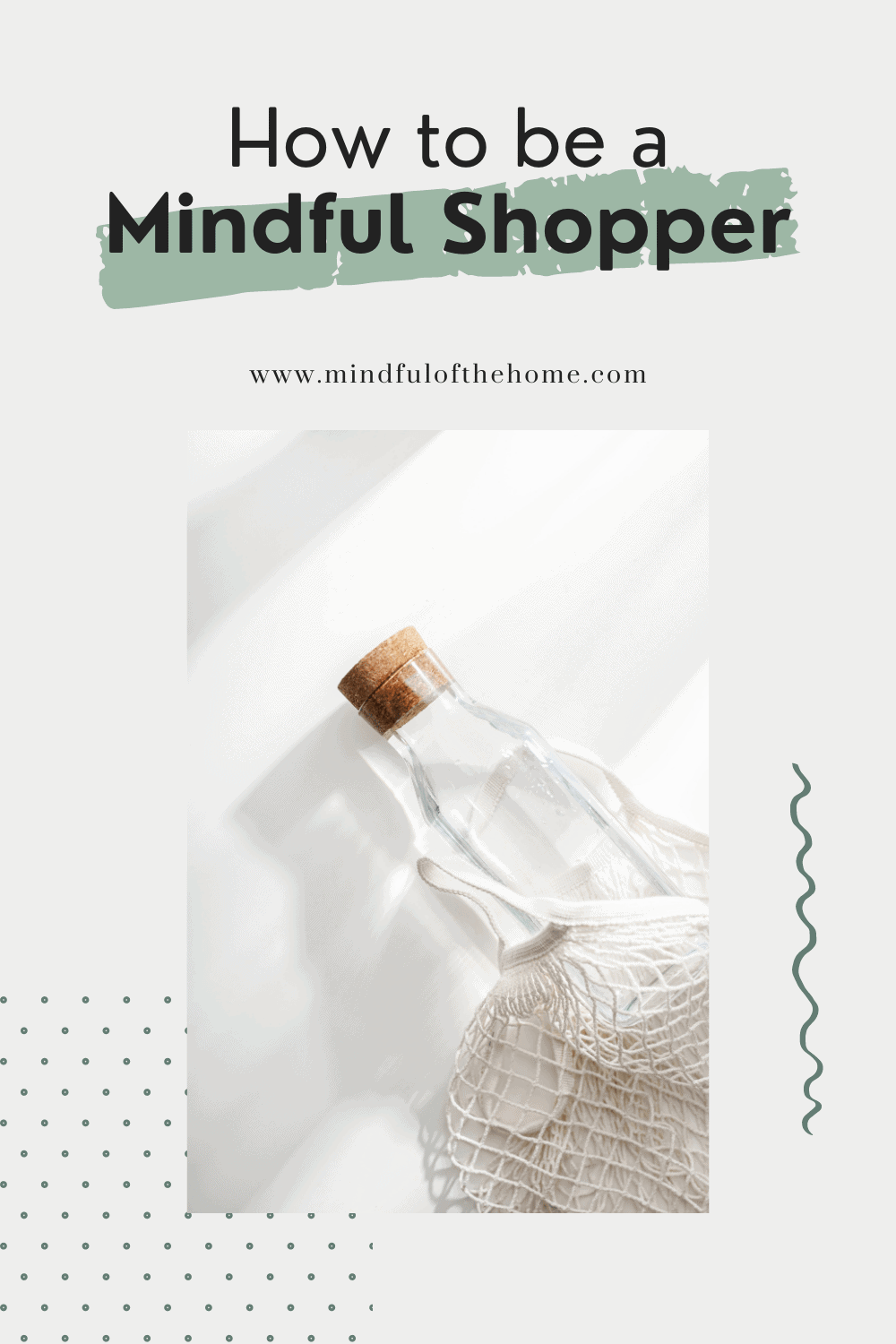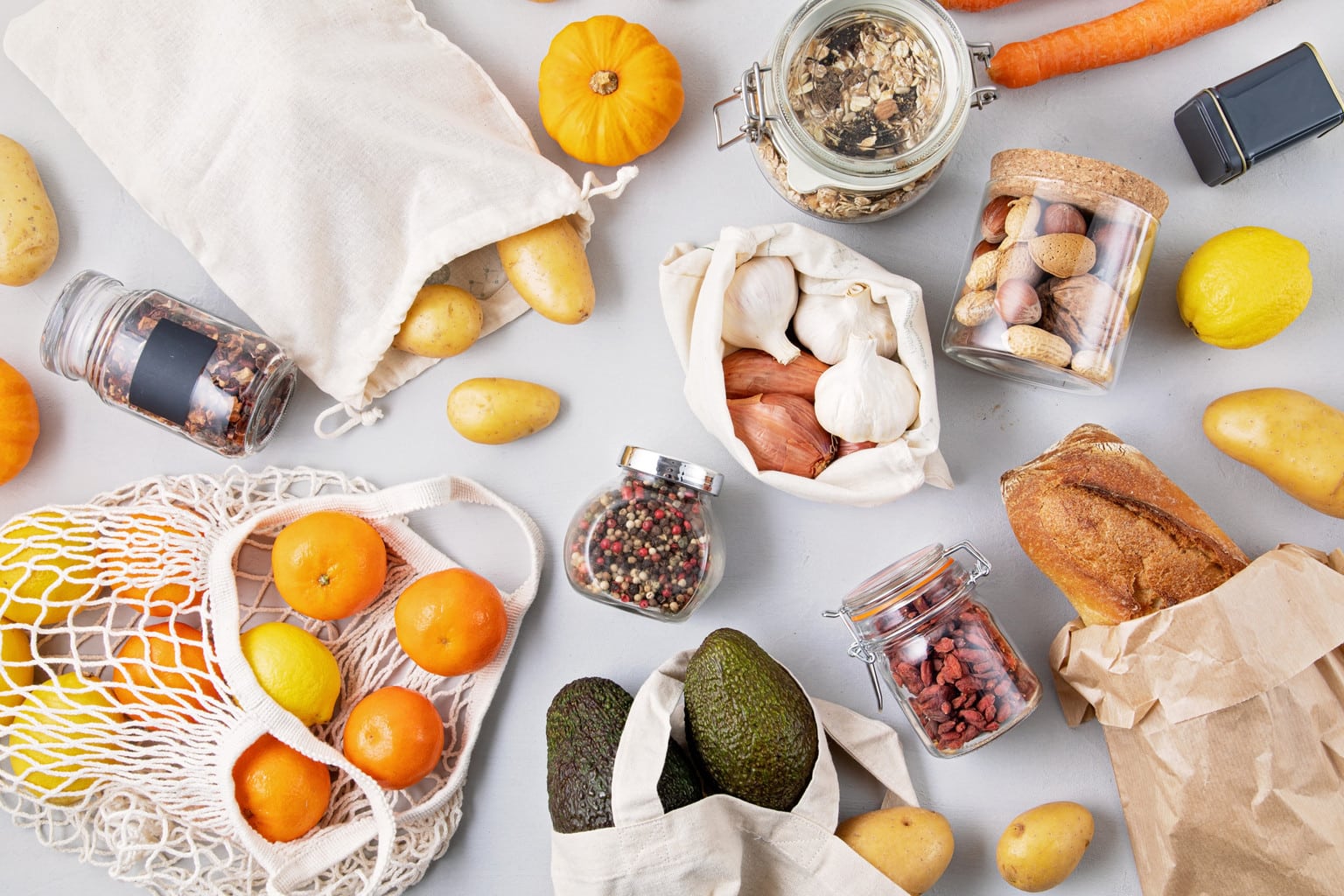Whether you’re looking to be more environmentally friendly, support fair wages, or ensure you’re buying a quality product, learning how to be an eco-conscious consumer is where it all starts.
By becoming a more conscious shopper, you’ll help support sustainable and ethical companies, which will lower your environmental impact and therefore help fight climate change.
But if you’re not exactly sure how to get started with conscious consumerism, or how to shift your mindset into a more thoughtful one, this post is for you.
What is conscious consumerism?
If you’re wondering what exactly it means to be a conscious consumer, it’s about being mindful of the products that you buy. It means doing research on products and brands as a whole to determine if they’re ethical.
You want to be conscious of how products are made and how they affect the environment, the people, and the economy.
Being a more mindful consumer is important because you have the power to make smart shopping decisions, and by doing so, other brands will follow their lead.
“Every time you spend money, you’re casting a vote for the kind of world you want.”
Anne Lappe
That’s because when you shop from a conscious brand, you’re encouraging those brands to keep making their awesome products and telling other brands that THIS is what you want.
We need to shift consumer demands and consumer behaviour into making more ethical choices when shopping.
So what steps can you take going forward to be more aware of the items you buy? Here’s how to get started.
This post contains affiliate links which means I may receive a commission at no extra cost to you should you click through and make a purchase.

1. Make better choices
When you get introduced to sustainability and the importance of maintaining it, the biggest thing you want to work on is making conscious purchases.
That’s because the average person buys a lot of stuff.
But where or who we choose to buy products from is SO important.
Conscious consumerism, AKA, choosing to purchase sustainable products, means that we hold the cards for the types of products that are being sold in the world. If a brand stopped making money on something, they’d have to create a new and better product.

A good example is Ziploc bags. What if half the people who used disposable bags just stopped and instead bought reusable bags like Stasher bags?
Do you know what would happen?
Ziploc’s earnings would fall by 50% and they would be more motivated to make a more sustainable option for their disposable bags because their drop in sales is proof that that’s what people want.
2. Start ditching disposables
Something you want to consider in order to drive real change: ditch the disposable items.
Disposable products like plastic bottles are a waste of money and are terrible for the environment since they can take up to 1000 years to degrade, which just leaves microplastics.
These companies make a lot of money selling items like this because people are always coming back to buy more.
But what if you stopped coming back for more? Like my Ziploc example above, they’d have the make some changes and start creating a better and eco-conscious alternative.
Related post: how to use less plastic at home.
3. Discover sustainable alternatives

I think a lot of people use disposable items because they’re not educated on sustainable alternatives.
When I first started practicing conscious consumption, I didn’t know what beeswax wraps were or even what a safety razor was. It didn’t even cross my mind that there would be better alternatives until I started practicing mindful shopping.
Disposable products were the norm. So, instead, I became educated on reusable products that replace single-use items.
Let’s go back to the Ziploc bag example again.
Would you rather spend $15 a month on baggies that you’re using once and then throwing in the garbage which then goes to the landfill? Those bags aren’t recyclable so that’s where they’re going to end up.
You can try to rinse your disposable baggies and reuse them, but these types of bags are so cheap that they might not hold up. That’s because these bags are typically only meant to be used once.
I don’t know about you, but I would much rather invest that $15 on reusable bags that will last me years and years to come. This is a perfect example of conscious consumerism.
4. Be willing to pay more sometimes
Many consumers would pay more for a product that’s sustainable, myself included.
This could be due to the fact that sustainable products are usually better quality and therefore longer lasting. Or maybe the materials used in creating the product were sustainably made like sustainably harvested trees or organic cotton, for example.
But you don’t always have to pay more for a product that’s sustainable. While this is true in some cases, it’s not true for most.
How do I know if a product is sustainable?
Sustainable products are products that are created with little to no impact on the environment, from the way the product is manufactured, to where it goes at the end of its lifecycle.
Here are some questions you can ask before buying something to determine if it’s sustainable, ethical or both!
5. Don’t buy cheap items

To be a more ethical consumer, you really have to let go of that ”buying cheap” mentality. That’s because the thing about cheap products is that they’re also low in quality and definitely not sustainable.
I used to be extremely frugal years back, only buying items that were extremely cheap in price. But the thing about cheap products is that they’re also low in quality and definitely not sustainable.
It’s important to remember when shopping that if it’s too-good-to-be-true cheap, it’s most likely because it was made with cheap materials, and possibly made through unfair labor practices somewhere overseas.
6. Follow conscious brands for sales
A great way to practice sustainable consumption without breaking the bank is to follow responsible companies. There are some incredible brands out there where the impact of their purchases creates positive environmental and social impact.
Instead of buying cheap products, buy high-quality sustainable products when they are on sale.
Keep track of brands you love, and instead of immediately purchasing something, wait for it to come on sale. Everything usually does eventually, so it’s just a waiting game.
That way, you’re also giving yourself time to decide if you actually need this new product. When the sale comes around, you may realize that you actually don’t want or need it anymore.
If you want to check out some sustainable conscious brands, check out these posts:
- My favourite sustainable brands
- Slow fashion brands saving the planet
- Eco-friendly subscription boxes
- Brands that plant trees when you make a purchase
7. Only buy products you need AND love

The most important thing about being a conscious consumer is that you have to love the products you buy. Mindless consumption is one of the reasons many people own too many items which may cause environmental problems since many items simply end up in landfills.
For example, do you have a shirt you cherish and would be devastated if it got destroyed in the wash? Or a sentimental coffee cup that’s irreplaceable should it break?
These are the types of relationships you need to have with the things you own.
I know. Relationships with products. It sounds weird but it’s really true.
Loving what you own makes you more inclined to take care of it, and most sustainable products need that care.
8. Consume less
Another way to practice green consumerism, and one of the best ways, is to reduce the number of purchases that you make.
That’s a huge goal of mine as a consumer. I want to stop buying stuff. I want to buy something once and never have to buy it again, which reduces my carbon footprint. Or, at least not for a couple of years.
This is one of the reasons why I love the zero-waste movement because it’s heavily focused on the importance of reusable products.
READ MORE: things to stop buying to save money and be more eco-friendly.
9. Shop secondhand when possible

When shopping, one of the conscious decisions everyone should make is whether or not to buy something secondhand. Focusing on trying to purchase items secondhand instead of brand new is a great habit to have.
Sometimes, we don’t actually need a new product and a used one will suffice, like clothing or furniture.
Personally, I prefer secondhand clothing for various reasons, and most of my furniture is secondhand. This of course saves money but it also reduces waste and keeps money flowing in my local community.
10. Do the research… or not

Research is a big part of buying a product, which is why it’s probably the most time-consuming part of making sustainable transitions.
You need to make sure that the product ticks all the boxes on your ethical checklist, but that takes time and a lot of people in the world don’t even bother with this step.
However, what if you could spend minutes deciding on a product, rather than hours?
That’s where EarthHero, an ethical online marketplace, comes in.
Every product has already been vetted and has been through an approval process and every product is sustainable or ethical or made with the planet in mind.

In simple terms, EarthHero is like Amazon, but for sustainable products.
Check out EarthHero and should you make a purchase, use my coupon code MINDFULHOME for 10% off your orders.
Final thoughts on sustainable consumerism
A big chunk of sustainability involves being a conscious consumer because the future depends on sustainable products.
By discovering ways that you can be a conscious and ethical consumer, you’re helping grow this movement further.
I hoped this post helped shed some light on what it means to be a conscious consumer.
Want more conscious consumer resources? Check out some conscious brands that I love and recommend.
Or read up on some of my best tips for making conscious purchasing decisions when grocery shopping.



